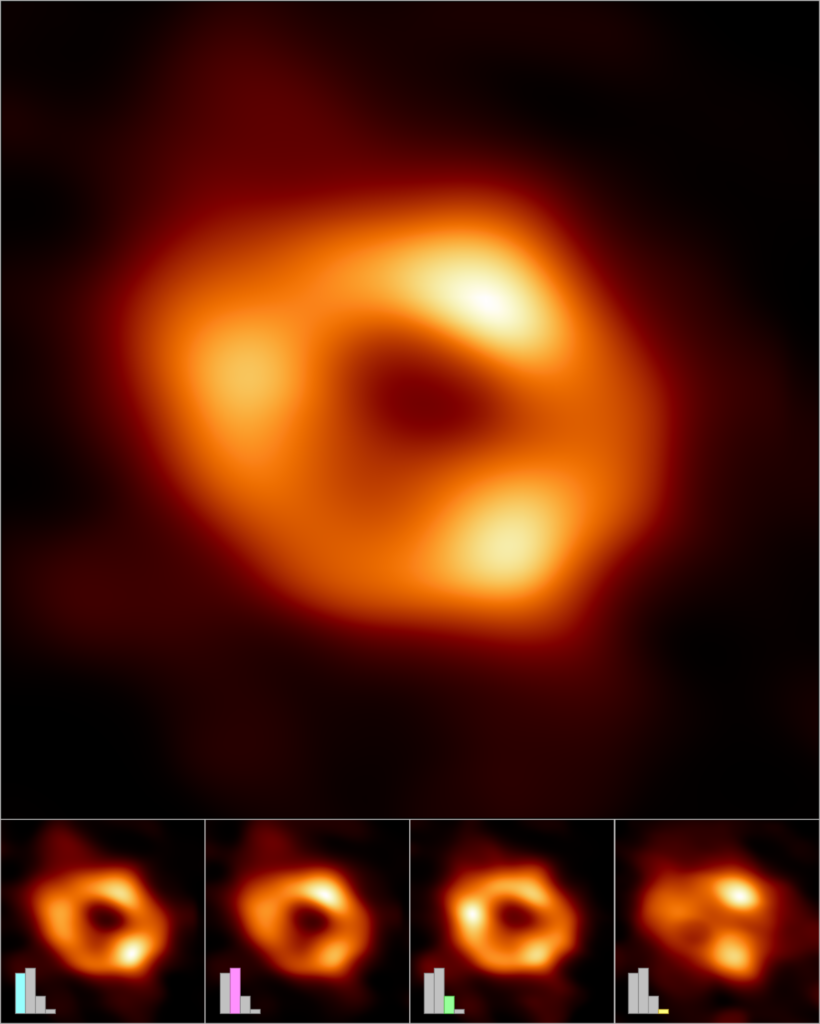
Taiwanese astronomers have published the first-ever images of the black hole at the centre of our galaxy, the Milky Way. Published on 12 May 2022, the images show a blurry look at the black hole, known as Sagittarius A* (pronounced “Sagitarrius-Ay-Star”), which is about 27,000 light-years away from Earth and is about four million times more massive than the Sun.
The long-anticipated visuals of the super-massive object provide clear evidence to the scientific community for the first time ever that our galaxy does indeed have a black hole at its centre. According to a blog post by Event Horizon Telescope, the images yield “valuable clues about the workings of such [giant black holes], which are thought to reside at the centre of most galaxies.”
We finally have the first look at our Milky Way black hole, Sagittarius A*. It’s the dawn of a new era of black hole physics. Credit: EHT Collaboration. #OurBlackHole #SgrABlackHole
Link: https://t.co/Ax7ECRVg8A pic.twitter.com/LRWizSYOy9— Event Horizon ‘Scope (@ehtelescope) May 12, 2022
According to the blog post, the images we are seeing are in-fact light being bent by the powerful gravity of the black hole, as black holes themselves are entirely dark and are invisible to the human eye. The glowing gas around the massive space phenomenon reveals the “telltale signature” of a black hole, that is, a dark central region called a “shadow” surrounded by a bright ring-like structure.
“We were stunned by how well the size of the ring agreed with predictions from Einstein’s Theory of General Relativity,” said EHT Project Scientist Geoffrey Bower from the Institute of Astronomy and Astrophysics, Academia Sinica, Taipei. Bower and his team were the first to publish images of Sagittarius A*.
“These unprecedented observations have greatly improved our understanding of what happens at the very centre of our galaxy, and offer new insights on how these giant black holes interact with their surroundings,” Bower said.
The EHT team’s results were published yesterday in a special issue of The Astrophysical Journal Letters.
To capture images of the black hole, Bower’s team had to create the Event Horizon Telescope (EHT), a powerful machine that linked together eight existing radio observatories across the planet to form a single “Earth-sized” virtual telescope. The team used the virtual telescope, EHT, to observe Sagittarius A* across multiple evenings, collecting data for many hours in a process similar to using a long exposure time on a camera.
The fruits of their labour are never-before-seen images of the black hole around which all our galaxy rotates, including every human that has ever lived on Earth.

According to the blog post, more than 300 researchers from 80 institutes around the world made up the EHT collaboration. The team worked rigorously for five years, using supercomputers to combine and analyse their data, all the while compiling a library of images of simulated black holes to compare with their real observations. The EHT team also had to create new technologies and complex tools to overcome the challenges of capturing an image of an object so far away that most people would never be able to fathom the distance.
The EHT collaboration team is still working and will continue to expand its EHT network and make technological upgrades that will allow scientists to share even more impressive images as well as videos of black holes in the near future.
By Luis Monzon
Follow Luis Monzon on Twitter
Follow IT News Africa on Twitter